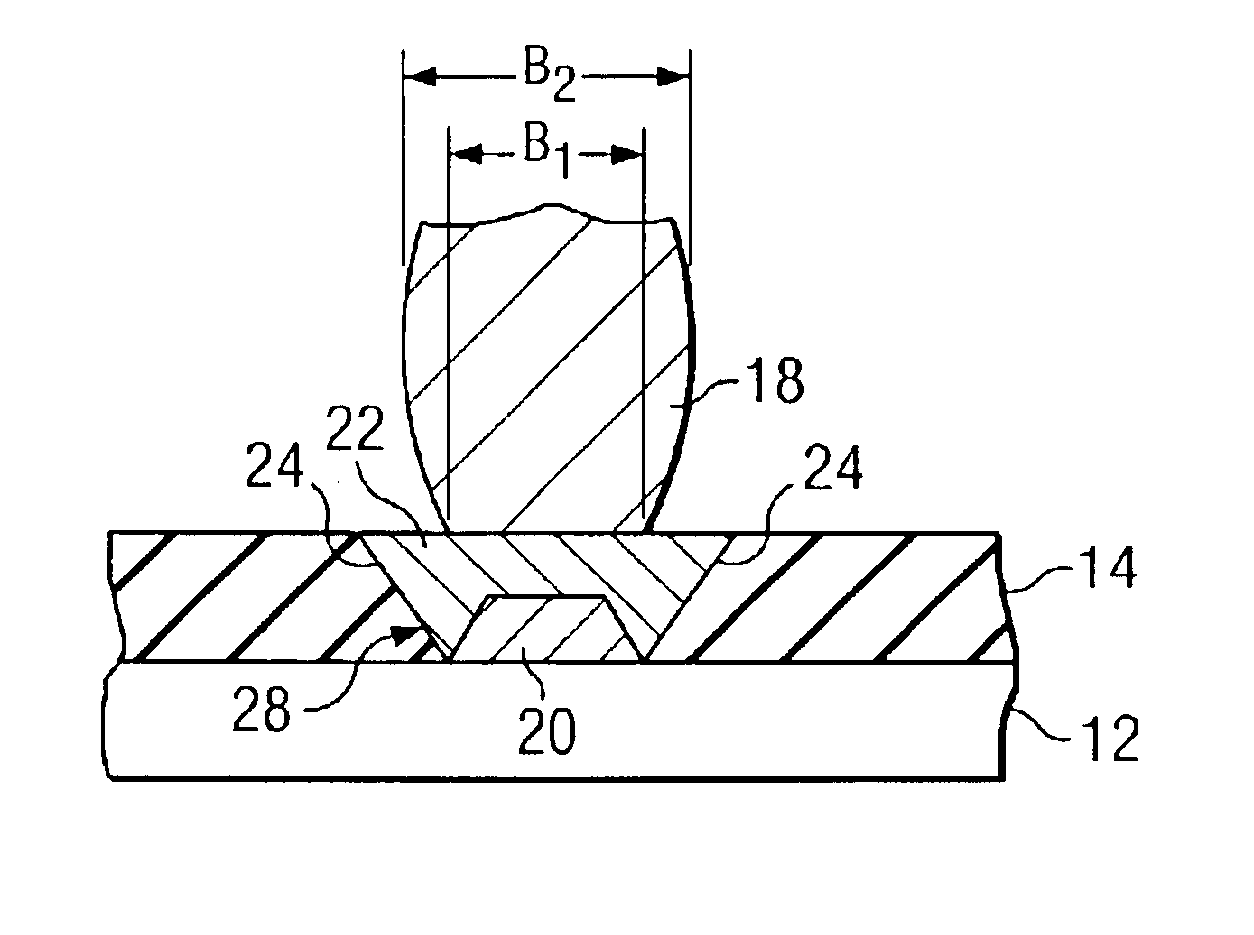Built-up bump pad structure and method for same
a technology of built-up bumps and bumps, which is applied in the direction of manufacturing tools, sustainable manufacturing/processing, and final product manufacturing, etc., can solve the problems of increasing the stress level at the connection between the solder bump and the die, affecting the production yield, and the chip stand-off height is decreased, so as to reduce the thickness of the solder mask, reduce the stress level, and improve the production yield
- Summary
- Abstract
- Description
- Claims
- Application Information
AI Technical Summary
Benefits of technology
Problems solved by technology
Method used
Image
Examples
Embodiment Construction
[0014]FIG. 1 illustrates flip chip assembly 10 in accordance with a particular embodiment of the present invention. Flip chip assembly 10 is a flip chip in which a conductive material has been deposited on each of the bump pads on the surface of the substrate, at least partially filling the opening in the solder mask around each bump pad. This conductive material increases the height of the bump pad structure, which in turn increases the stand-off height of flip chip assembly 10. The addition of the conductive material also reduces the thickness of the solder mask above the bump pad structure, which results in the flip chip assembly being less sensitive to assembly tolerances. Additionally, substrates having differing tolerances may be standardized by adding conductive material to the bump pad structures as needed until all the substrates share a common tolerance level.
[0015]As shown in FIG. 1, flip chip assembly 10 includes die 16 and substrate 12, which are positioned generally pa...
PUM
| Property | Measurement | Unit |
|---|---|---|
| conductive | aaaaa | aaaaa |
| height | aaaaa | aaaaa |
| sizes | aaaaa | aaaaa |
Abstract
Description
Claims
Application Information
 Login to View More
Login to View More - R&D
- Intellectual Property
- Life Sciences
- Materials
- Tech Scout
- Unparalleled Data Quality
- Higher Quality Content
- 60% Fewer Hallucinations
Browse by: Latest US Patents, China's latest patents, Technical Efficacy Thesaurus, Application Domain, Technology Topic, Popular Technical Reports.
© 2025 PatSnap. All rights reserved.Legal|Privacy policy|Modern Slavery Act Transparency Statement|Sitemap|About US| Contact US: help@patsnap.com


